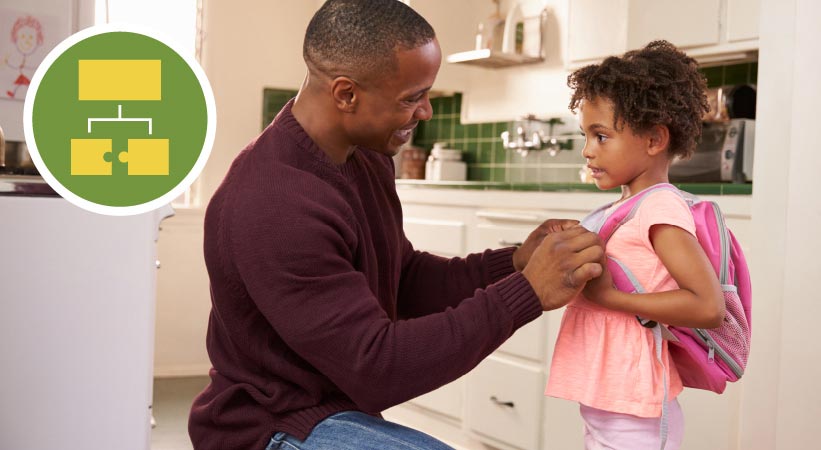
Problem decomposition is one way to make problems easier or faster to solve. This activity provides an introduction to problem decomposition, which involves breaking a BIG problem or task into SMALLER, easier parts. Children will listen as you read Lola Goes to School and work together to identify the BIG task of getting ready for school and the smaller parts that are involved in Lola’s routine. As children break down Lola’s routine, they will have opportunities to count and compare the number of smaller parts.
Explain and define problem decomposition
Read Lola Goes to School or another book about school routines. As you read, pause and identify the different (smaller) things that Lola or the main character does to get ready for school (big task). Summarize with children after they make observations.
Generate a graphic organizer based on the book. Draw a big blue circle (BIG task) on the top of the poster. Invite children to identify the big task that Lola wanted to complete. Draw smaller green circles (SMALLER tasks) below the big blue circle. Encourage children to share the smaller tasks that Lola did to get ready for school. See example below. Some guiding questions may include:

Once complete, review the poster and engage in math talk (see examples):